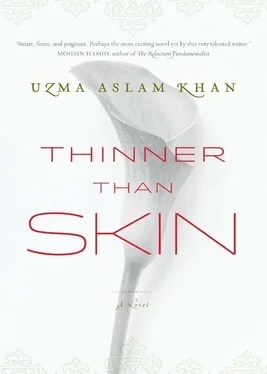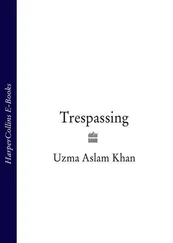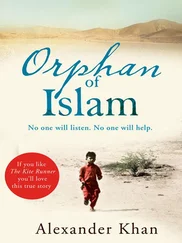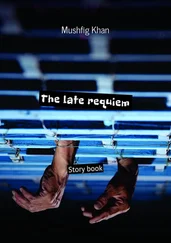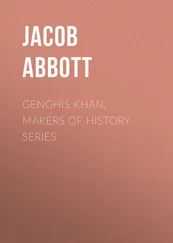“Unlike you,” Maryam said, and Kiran kicked her spine.
“If they don’t live even half as long as our sheep, where is the gain from all that wool and meat?”
Kiran waved her arm and her bangles chimed. They were tiny bangles, given to Kiran by her grandmother, and as her arm grew pudgy, they rolled along its length less and less. Maryam would have to remove them soon, to replace them with larger ones.
“Another thing,” she kept on, “their wool. So long it gets all tangled up in thorns as we look for better feed, just for them. No. These foreign sheep are better off staying in one flat dry place.” And she launched her final reprimand, “They are sedentary sheep.”
After a while, she added, “If you don’t let me braid your hair you will grow wool like theirs. All tangled up, and bald before you know it!”
In later years, she would tell her daughter more, how the Australian sheep, because of their silly diet, forced the herders into pastures that were closed to them. They were forced to pay fines. Huge fines. One year a fat sheep nibbled two stems of a ginger plant with twelve stems. The plant could afford to lose two stems. But no, they were made to pay a hundred rupees per stem. The government was closing off their freedom to roam the land the way Maryam had done when she was Kiran’s age, and this too was killing the sheep they had been forced to buy. Even their goats were meddled with. The government replaced the sturdy Kaghani goats and the fierce Kilan goats with those that yielded more mutton but ate all the feed and left the indigenous goats bleating in hunger.
Kiran understood these things. This April, when they set off for Lake Saiful Maluk — the hills around which they were still free to graze in — Kiran had climbed onto the mare Namasha with an Australian lamb tied to her back. It mewed pitifully the entire way, ignoring Kiran’s repeated warnings. Once they were at the lake, she abandoned it. “Go to your mother!” she snapped, and set about chasing her own goats instead. Kola, Bhuri, Makheri. Her own names for the only Kaghani goats left in their flock. Maryam had laughed. Her daughter, like her, would make a restless mother, preferring the child that could play on its own.
She had watched Kiran recede up the hill and gone back to arranging the hearth, piling up stones to light a fire to cook the maize bread for the guests.
Ghafoor was watching her at the shrine. His only reason for coming here, to the land that had banished him, was to see Maryam. Now that he had seen her, he could not leave. Kiran, at whose birth he had played the flute, had been killed. He would not leave yet.
He held to his lips a tall aluminum glass of lassi. What he had been suspecting for some time now was true. The milk of a mare could not compare to that of a buffalo.
She could feel him at her back, just as she had felt him inside the hut yesterday, when she lay on her side. She thought of silken tendrils and pale green buds and how easily each could snap. They did not speak. She willed him not to come close. She would let the weight of grief pull her to the ground. He would have to watch his one desire for her— never grow old —smack him defiantly in the face.
How could she keep the pieces of her heart warm? She had asked herself this repeatedly since Kiran’s death. What was the point of a reprise without reprisal? She wanted justice. She wanted justice more than she wanted warmth.
“Maryam.” He took two steps toward her.
She shook her head. In the years since her marriage she had tried to think of her husband as the pasture inside their barrier of mountains. She had tried to stop thinking of Ghafoor as her window to the world. The shimmering blue feather he left in the cave had both excited and worried her. And the pain of losing Kiran — it was all too much.
“Leave me.”
He waited for her to change her mind but she knew he knew her better than that.
He left her, for now, but he would be back in a few hours. What was he doing traveling the globe and carrying everyone else’s woes, when he could not even help his own people?
Before moving away he opened the box and took out the second flower. Still fresh. They will only last as long as you do , the men had said. How long was that?
He did as he was told and did not look underneath.
She had taken the bangles off before Kiran was buried. The heavy necklaces, too. The toe rings had to be cut; even after oiling the toes, they were too swollen. She had braided her hair, in both styles. First, a thick knot starting at the top of her forehead and woven all the way around her face. Kiran’s face was so lovely in its oval form and the braid had cupped it as her own hands had done. But then Maryam’s fingers had untied the knot and moved swiftly into weaving a series of thin braids starting from the top of her dead daughter’s forehead and converging down the back of her head as one. For a long time, she had stared at that one braid. The color of maize, the thickness of rope, it scraped the nape of her daughter’s neck, the color of which was turning devilish. And the texture — she could not dwell on it, the cold clamminess against her fingers. In slow, deliberate movements, she eventually untied the braid. Kiran would want her hair as loose in death as in life.
She had hidden the bangles and the other jewelry in a box in a corner of the shrine. The box also held Kiran’s two front teeth, the first of which had nearly cost Kiran her life. After it fell off, Kiran rolled the tooth on the floor, on her arm, between her palms, and in every corner and crevice she could find. Then she skipped to Maryam with a smile. “Guess where it is.” Mayram could not guess. Kiran tapped her nose. “What does that mean?” Maryam asked. “Guess!” The child eventually revealed that she had stuck it up her nose. She wanted to see how far it would go. She was amazed to find the area “open.” The tooth kept going up! Up! She would have pushed it all the way to her brain had her finger been long enough. “Don’t breathe,” commanded Maryam. “Sneeze!” When this did not work she slapped the back of Kiran’s head, demanding, “Which nostril?” Kiran, now frightened, would not say. In due course, pure instinct told Kiran to squeeze shut the right nostril while, from the left, she blew and blew till a slick white stone shot forward, so large both mother and daughter stared in horror.
Now, caressing the tooth with her fingers (it was slightly larger than the second tooth, smoother too), Maryam remembered the legend of Maryam Zamani, who could will a stone to cease obstructing her way. And she fingered the bangles, the ones she still heard chime, every day and every night, including in her sleep. They had been a sign — don’t let me go in the boat! — but she had not listened.
When Maryam eventually crawled outside her shrine, she found a second yellow flower waiting for her in the dirt, near the hole that served as entrance. The flower reminded her of a butterfly that had landed on her shoulder once, when she was a child. She had never seen the exact shade of yellow again, not till now. She did not know how to read this sign either. She twirled the stem till the heart of fire grew to the ends of the petals and the ends of her world. The day was too bright. She wanted to retreat into a mountain cave, into darkness lit by ancient markings. She wanted to carry this spiraling flame into the cool cover of her highland shrine, deep in the Karakoram’s womb.
Mixed in with the weight of grief was the weight of caution. In the months between their departure to the lake and their return to the lowlands, the world had tipped unsteadily. It was not a reliable unsteadiness, the kind that leads from pasture to plain, according to the season’s change. This motion had no rhythm. What it had was men in tanks and spies in plainclothes, all showing up at your door and demanding to be placated with the sugar you were saving for your children, or your guests, or a man who would leave you a sign in a cave.
Читать дальше
